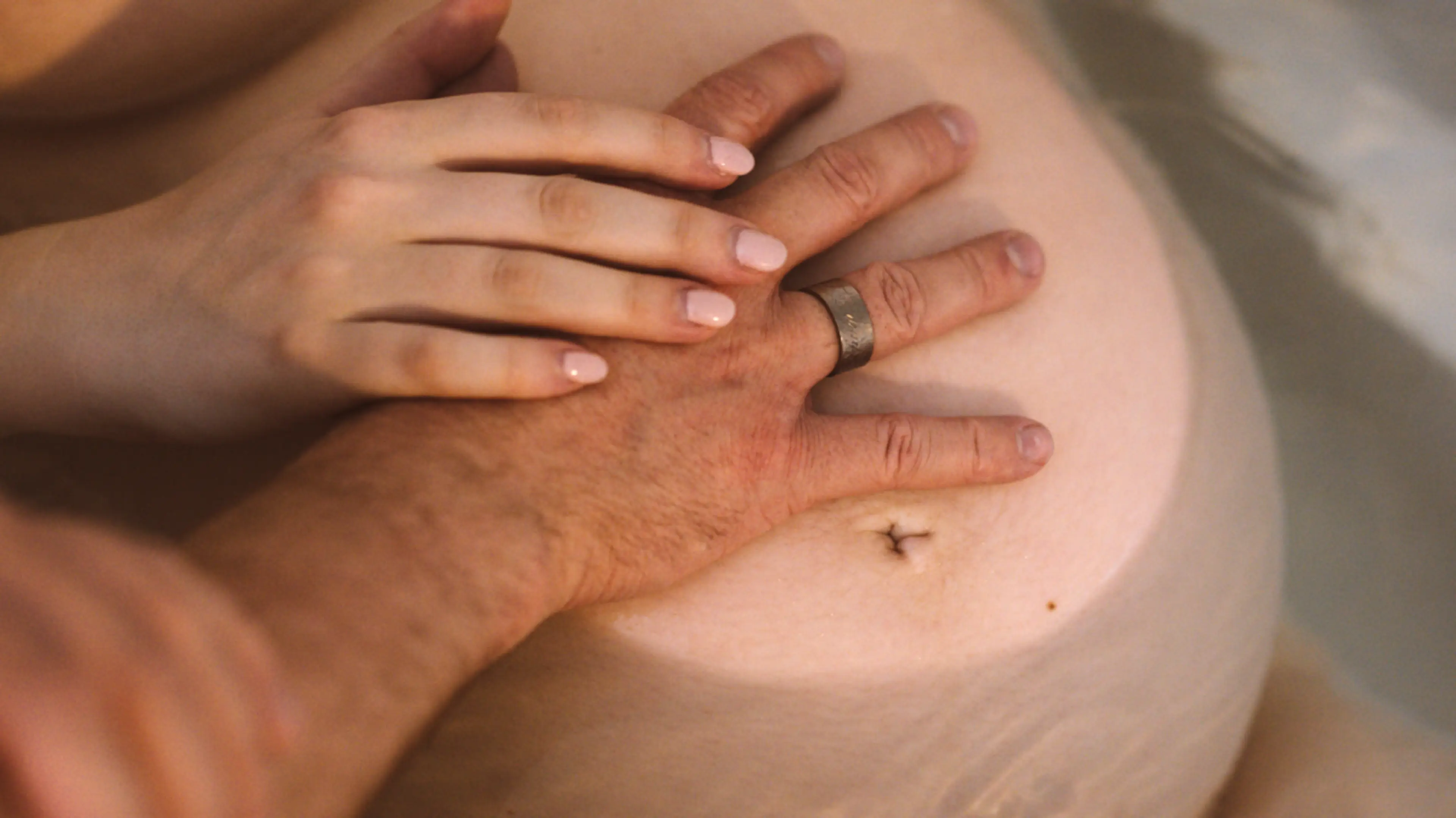We often think of labor as one big event, but it’s actually a process (sometimes a long one) made up of three stages: the first stage, which includes early labor, active labor, and the transition stage; the second stage, which is when you push; and the third stage, which is when you deliver the placenta. Knowing these stages and how they progress can help prevent you from being too surprised or alarmed by the changes that happen when you go through them.
What Are the Stages of Labor?
Every labor is as different as the woman going through it, but the stages of labor are the breakdown of how things typically go down. They are:
First Stage of Labor: Early Labor, Active Labor and Transition Phase
Second Stage of Labor: Pushing
Third Stage of Labor: Delivering the Placenta
What Happens During the First Stage of Labor
The first stage of labor is the time your cervix dilates and effaces to prep for birth. It starts when you begin to feel regular contractions and ends when you’re dilated to 10 centimeters. It has three phases: early labor, active labor and the transition phase.
Early labor
In early labor, contractions might start out slowly, maybe just one or two per hour. They’ll gradually become more frequent and stronger during this phase. Your cervix will dilate to about three centimeters.
What you may feel: For many women, the contractions feel like cramps in the lower back or abdomen. They’ll last about 30 to 45 seconds each. They may not be uncomfortable, but you’ll know it’s early labor because the contractions will just keep coming (unlike Braxton Hicks contractions, which go away). You might also lose your mucus plug and/or the bloody show, which means the cervix is changing to prep for delivery. Your water might also break.
How long it lasts: This stage of labor is usually the longest, lasting around eight to 10 hours for many women and could even last days for a first-timer.
Tips to get through it: You may find that moving, stretching or soaking in the tub helps you stay comfortable while your contractions increase. As nervous and excited as you might be at this point, try to relax and rest if you can. Meditation can also help.
“In the early stages of labor, I think staying home is ideal to be comfortable in your surroundings,” says Meredith Sheffield, a labor and delivery nurse in Wilmington, NC. “Balance rest with frequent position changes, walking, sitting on a ball…really whatever feels right.”
If your contractions start at night, you might even try to go back to sleep until morning (easier said than done, we know!). Try to stay hydrated and eat plenty of snacks if you feel hungry.
Start timing your contractions so you know how far apart they are and how long each one lasts. Call your doctor to get personalized advice on when to head to the hospital. Factors may include how far away you are and whether or not you’ve delivered a baby before.
You can also remember the numbers 5-1-1: A general rule of thumb is to head to the hospital if your contractions are five minutes apart, lasting one minute long for at least one hour.
Active labor
During active labor, your contractions will increase in frequency—they’ll last about 45 to 60 seconds each with about three to five minutes rest in between. Your cervix will start to dilate more rapidly during active labor, from about three centimeters to about seven.
What you may feel: In active labor, the contractions will feel more intense. They may become so intense that you’ll likely no longer be able to relax or do things around the house. Handling contractions will take all of your attention.
How long it lasts: Active labor can last about three to five hours.
Tips to get through it: First, head to the hospital or birthing center if you’re not there already. You’ll be uncomfortable during active labor, so try changing positions or doing some deep breathing during your contractions. Some women choose to take a shower or bath to ease some of the discomfort. If you want an epidural, active labor is the stage where you’ll get it.
Transition stage of labor
In transition, your cervix dilates from eight centimeters all the way to 10 centimeters. It’s intense, to say the least—for many people, this is the stage that puts the “labor” in labor.
What you may feel: Many women feel strong pressure in their lower back and rectal areas. “The transition phase can be really intense whether you have an epidural or not,” Sheffield says. “Intense pressure is normal and can help you push more efficiently when it’s time.” Contractions can last 60 to 90 seconds with only 30 seconds to two minutes in between—they may even overlap.
During transition, some women get hot flashes or chills, feel nauseous and may even throw up.
How long it lasts: Though the transition stage of labor is often the most intense, it’s also usually the shortest, lasting anywhere from a few minutes to a couple hours.
Tips to get through it: If you can still move around easily during transition, changing positions may help move things along. You can switch from side to side, move to all fours or even hold onto a “squat bar”1 above the bed if your room has one.
What Happens During the Second Stage of Labor
You probably know what 10 centimeters dilated means: It’s time to push! And pushing is exactly what you’ll do in the second stage of labor.
Pushing
Your doctor will likely tell you when you’re 10 centimeters dilated. There will also be a distinct, undeniable urge to push. You’ll push with each contraction, and during the last few pushes, your baby will crown (their head will become visible) and emerge from the birth canal. (Yay!)
What you may feel: During the second stage of labor, your contractions might move a little further apart, giving you a chance to rest between each one. The urge to push might feel a lot like needing to go #2. (And yep, you might actually go #2—but don’t worry at all about that. It happens to a lot of people.)
You may also feel the infamous “ring of fire,”2 a burning or stinging sensation, during crowning.
How long it lasts: Pushing can last 20 minutes, or it may take two hours or so.
Tips to get through it: “I always recommend waiting to start actively pushing until the urge to push is overwhelming,” Sheffield says. That way you’re working with your body and conserving your energy. (If you’ve had an epidural and can’t feel the urge to push as strongly, your healthcare provider will let you know when it’s time.)
If you wish, you can watch your baby crown using a mirror or have your medical team talk you through what’s happening. Once your baby is born, a nurse will probably place the baby on your chest right away for some bonding time. You did it!
What Happens During the Third Stage of Labor
The third stage of labor happens after your baby is born. In it, you’ll deliver the placenta. This is sometimes referred to as the afterbirth.
Delivering the placenta
You’ll have a few contractions as the placenta separates from the uterine wall, and your provider might ask you to push to help things along. They also might apply pressure to or knead your abdomen to help it detach.
What you may feel: While some women hardly notice the sensation of delivering the placenta, others do find it painful. And you might shiver or shake after it’s delivered, which is common and considered normal. You may need some post-delivery stitches afterward, and that can hurt as well.
How long it lasts: This stage usually only lasts about five to 30 minutes.
Tips to get through it: Relax. At this point, you may be holding your baby, so try to keep your focus on them, if possible.
Throughout the many stages of labor, it can help to stay flexible and keep an open mind. Things can change from minute to minute, and everyone’s experience of labor and delivery is different. Remember: the most important outcome is a healthy baby and mom.
“Try to be patient with your body,” Sheffield adds. “What you are doing is amazing!”











